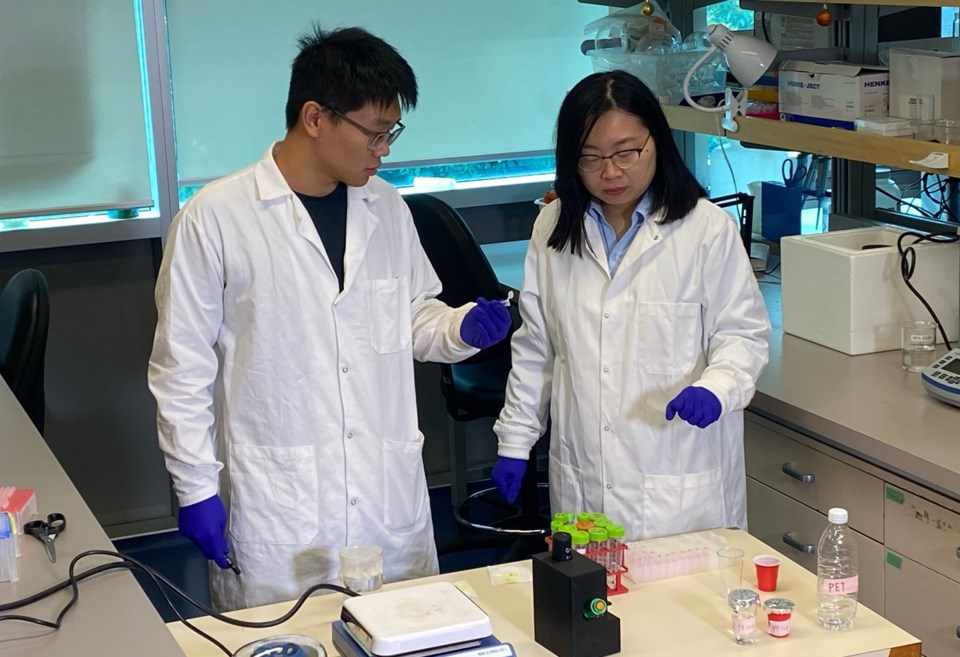VANCOUVER — When food safety researcher Tianxi Yang became a mother, she wondered how much microplastic her son would ingest when drinking milk out of widely available plastic containers.
She says microplastic exposure and the effects of the tiny particles on human health have been on researchers' radar for at least a decade.
But testing for microplastics required costly and cumbersome equipment — so Yang set out to create a portable unit that could be used by untrained people at home.
"I think the micro and nanoplastics detection is very meaningful because it allows people to realize how much micro and nanoplastics they're being exposed to, even though they may not notice," said Yang, an assistant professor in the faculty of land and food systems at the University of British Columbia.
The device is now a reality, unveiled by Yang and master's student Peter Yang at the university in 91Ô´´ on Tuesday.
It uses a 3D-printed box made of biodegradable material, fitted with a commercially available wireless digital microscope, a green LED light, and an "excitation filter" to test liquid samples smaller than a drop, causing any microplastics to glow.
The images are then analyzed by an algorithm to calculate the amount of microplastic in a sample.
In the demonstration, images of microplastics were sent from the device's microscope to researchers' phones.
"We were actually more than surprised when we see there are so many microplastics released," Tianxi Yang said. "My goal as a food scientist, I want to use my knowledge and research to protect the public health, so I think the device we developed is just the starting point."
Yang said she believes microplastics are a "significant threat" to food safety, health and the environment, and affordable detection of the material could help reduce their hazard.
Microplastic particles can be created when things such as plastic cups or utensils degrade, releasing the material into food or drink that could then be ingested or absorbed into the body.
In a study published this month in the peer-reviewed journal ACS Sensors, the device was tested on boiled distilled water that had been placed in disposable polystyrene cups for 30 minutes.
The tests showed the cups released hundreds of millions of polystyrene particles into the water, each about one-hundredth the width of a human hair or smaller.
Each test, the researchers said, costs about 1.5 cents.
Student Peter Yang said there are a lot of food safety issues in his native China and he wants "to protect people from those food safety concerns."
To make the transition away from plastics, he said, "still takes time."
"Plastics are very convenient and lightweight and economic, therefore most of the manufacturers still use plastics," he said. "But when we think about a more eco-friendly situation, we still should substitute those plastics to biodegradable and environmentally friendly products."
He said it was "a very good strategy" to move away from single-use plastics to either biodegradable materials such as paper straws, or "long-term use" products like glass or stainless steel.
The device currently is calibrated to detect polystyrene, but could also measure different types of plastics including polyethylene or polypropylene.
A statement from the university said the results are easy to understand "whether by a technician in a food processing lab or just someone curious about their morning cup of coffee," and researchers hope to commercialize the device to analyze plastic particles in "real-world applications."
This report by The 91Ô´´ Press was first published Aug. 27, 2024.
Darryl Greer, The 91Ô´´ Press



